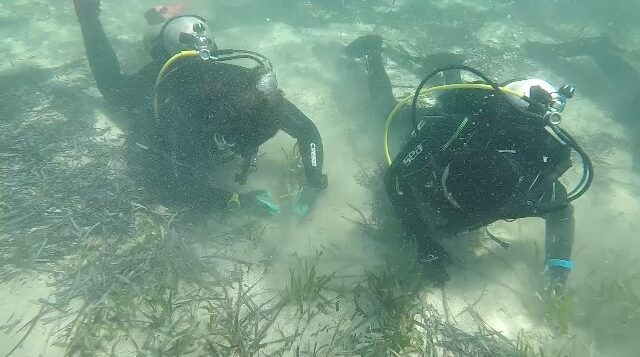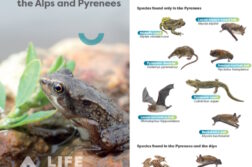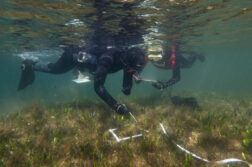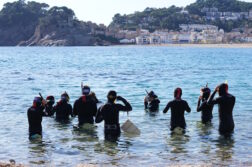The CEAB-CSIC researcher, Oscar Serrano, has presented the Tidal Moon blue carbon project, in which he participates as a member of the scientific team. This has happened in the Conference for the restoration of blue ecosystems held on October 18 and 19 in Balearic Islands.
Shark Bay, in Western Australia, is a World Heritage Site for several reasons, including the biodiversity it hosts and the fact that, thanks to its large expanses of seagrass, it captures and stores high quantities of the carbon dioxide that we pour into the atmosphere.
In 2010 this iconic bay was severely affected by an unprecedented heat wave. The significant rise in water temperature destroyed 1,000 square kilometers of marine plants.
The following year, the CEAB-CSIC researcher sampled the area to evaluate the consequences of this plant’s mortality. The field work showed that it was affecting all underwater life and that there was a before and after in Shark Bay’s role as a capturer and storer of enormous amounts of carbon dioxide.
Dr. Oscar Serrano explained at the Conference: “we saw that the areas without marine vegetation contained a much lower amount of carbon than the spaces in which the phanerogams had survived. Where had all that carbon gone?
It could be determined and quantified: in the three years following the heat wave, Shark Bay would have returned about 9 million tons of carbon dioxide to the atmosphere, the equivalent of the emissions of 1.6 millions of vehicles for a year. When the marine plants died, all that CO2 retained for thousands of years had returned to the environment.
To recover biodiversity and the role of the bay as a carbon sink (extracting carbon dioxide from the environment and retaining it), a conservation and restoration project for seagrass was initiated.
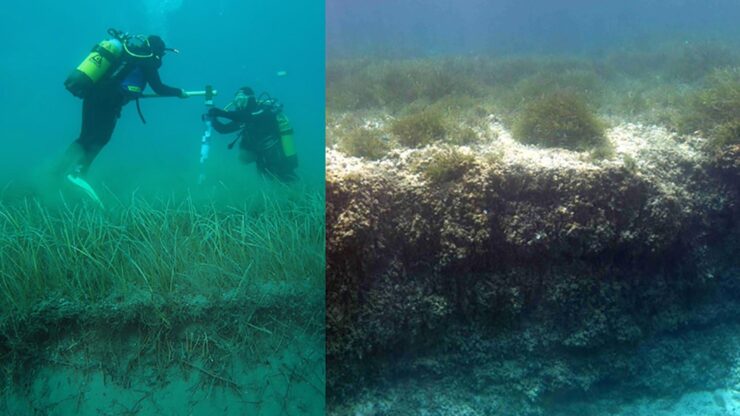
Joining efforts with the aboriginal population
Tidal Moon is an aboriginal-led marine services company. Local and historical knowledge about the bay and its seabed joins the scientific knowledge to drive the recovery of Shark Bay.
Among the entity’s projects is the conservation and restoration of marine meadows.
“The objective is to recover 100 hectares of seagrass every year and over ten years,” explained Oscar Serrano. It is estimated that each restored hectare will store about 350 tons of CO2.
The focus is both on the protection and conservation of existing phanerogams and on restoration, “revegetating” those areas where it is possible to do so. The restoration part is difficult and long, given the slow growth of the plants. However, it is hoped that the bay’s depleted biodiversity can be restored, as well as its former potential to avoid carbon dioxide emissions.
Restoration of blue ecosystems
The action in Shark Bay with the aboriginal population is an example of an initiative aimed, among other issues, at mitigating global warming. For years it has been seen that these actions cannot only be directed at forests, but must also include other habitats of primary importance as the lungs of the planet.
This is the case of seas and oceans, with great weight in coastal systems, where seagrasses, mangroves, marshes…capture and store large amounts of carbon dioxide for thousands of years. These ecosystems are called “blue carbon”, precisely because of this role as carbon sinks.
Conservation and restoration; In short, the renaturalization of coastal areas is becoming a priority to confront global change.


